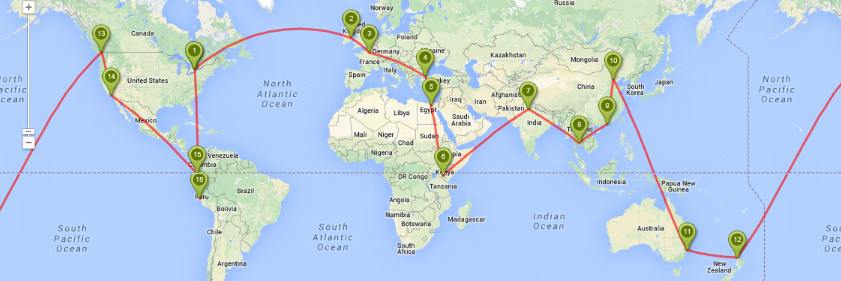We arrived in Stone Town amid the midday heat and were greeted very warmly by our hotel reception at the Tembo Hotel. They have great apartments for families that are spacious, have nets, AC and most importantly – a beach and a pool!
One special feature of our place was that we stayed in the Freddy Mercury apartments. The people at our hotel claim that Queen’s lead singer lived there, so our entire apartment building was filled with images of the performer. We all started singing Bohemian Rhapsody as we made our way up the stairs!
After some rest and refreshments, we made our way around Stone Town and saw some of the sights influenced by African, Arab and Indian cultures. It reminded us of our time in Fes, Morocco as it labyrinth style streets were similar in some ways to the Medina. One thing that stood out for us were the doors – many of them had spikes on them. We found out that in the past, large spikes were put on doors to stop the elephants from breaking them down. Now, they are used decoratively.
Along the waterfront was the Arab Fort built in the 17th century. Next to it was the House of Wonders – a ceremonial house for the Sultan Barghash and the first to have electricity! Next to it was the Palace museum which was the former palace for the Sultan’s family. It was turned into a museum in 1994.
After wandering through some of the back streets, we came upon the local market. It was a bevy of activity and full of local spices, fruits and veggies, as well as anything else people could sell. One of the local spice keepers was trying to sell to us and claimed that it was a “Spice Happy Hour!” of course we would get the local price – not the tourist one!
From there we moved onto the more somber place of the Old Slave Market. We started our tour in the former Slave Chambers and heard the history of how when the Portuguese colonized Zanzibar, the island became the place for slaves from all over East Africa to be sent. Those who survived the chambers were brought to the market and sold. Men were for working the plantations, women for the sex trade and children for house servants.
There used to be 12 chambers, but only two have been saved as a memorial for what happened back then.
When the slaves were brought to the market, they were tied to a whipping post – those who cried out were sold for less. Those who were silent were sold for a higher price. There is now a church built upon the chambers and the former whipping post is on the high altar. The red marble surrounding the whipping post is to symbolize the blood spilled by the slaves.
We were all very moved by the stories we heard. It was shared with us, not in an accusatory way, but rather, in a way to ensure we treat all humans with respect as equals regardless of race, nationality and/or religion.

We really enjoyed our time in Stone Town – the architecture was neat and the culture was lots of fun. The people are very warm and friendly and willing to help us with everything. We would highly recommend a visit to this wonderful place!
Keribou Sana!



















Comments
8 responses to “Stone Town, Zanzibar”
Those stories are powerful and need to told to generations so that we don’t repeat history. I would assume that these islands were visited by traders from all over the world.
Hi Iniyal,
You are so right…these stories need to be shared over and over again! And yes, we learned that there were two slave markets in Africa during the colonial times. The one in East Africa (Zanzibar) was established by the Portuguese, while one in West Africa (Senegal) was created by the British. Plantation owners from the New World bought slaves to help work in their fields. We also learned that slaves were the losers in battles, or even local leaders would sell their people as slaves to make money. It’s sad to hear such stories…but hopefully as we become more enlightened, we do not repeat these same mistakes.
So powerful and so beautiful at the same time. This is such a good thing that your girls are absorbing . I have always maintained that there should be a ‘Gap” year built into all Western educational systems where students/learners would have to spend the year between high school and post secondary school in a developing county as a volunteer. Might slow down the desire to’ divide and conquer’ and nurture the desire to restore rebuild and reform….So much to see and learn in such a small place!
I really like your terms Herta – restore rebuild and reform would be great for us as first worlders to employ to help others and their living conditions. Mik and Zoe are certainly seeing many opportunities to help others…they now totally “get” that most people around the world, do not live like we do….let the education continue!
Kat, this is a very touching blog and I thank you very much for sharing! The Photos are very touching as well. Mom
Thanks:)
Hi, Katina, I liked this posting very much. As always on your travels, you find the special places and talk about the people and their history, and it always wants me to know more. The segment about the slave trade and the sculpture are very moving. Thank you
Hi Oma,
Stone Town was a really neat place…the slave trade really made us stop and think on how such a beautiful island could have such a dark past. Now it seems people are ready to move on and keep the memories as their history – not their life. Tanzanians are warm and wonderful people we have really enjoyed meeting.
Cheers,
Kat:)